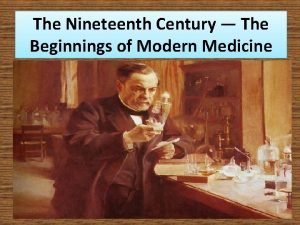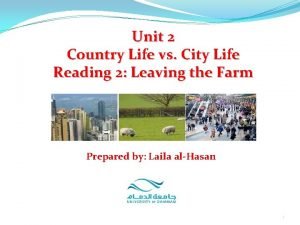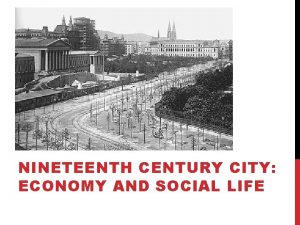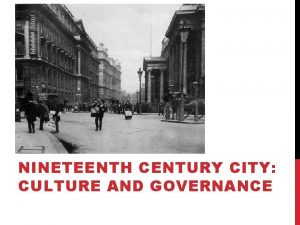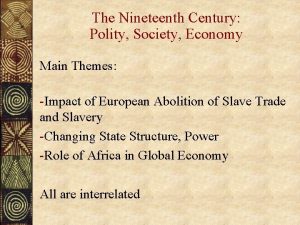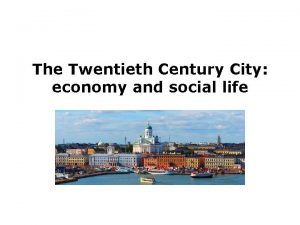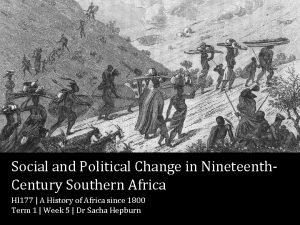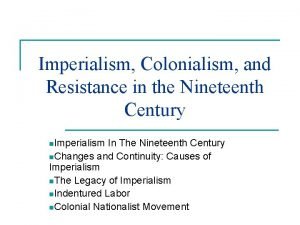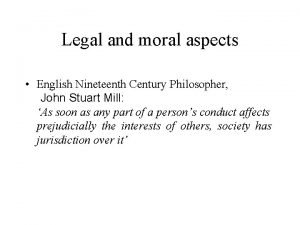The Nineteenth Century City economy and social life












- Slides: 12

The Nineteenth Century City: economy and social life

Cities and Industrial Revolution • Agricultural innovations, manufacturing growth and trading developments. • The leading role of England. • Immigration to the cities. The localization of the factories. • Urban growth after 1870’s.

Urban hierarchies • Capital cities and regional centres. • The strengthening of urban networks. • Specialist cities: manufacturing centres, transport centres, market towns, military and leisure towns. • European-style towns outside Europe. The colonial cities.

Urbanizing European economy • Cities and globalization. Expansion of railways and navigation. • Coexistence of factory and traditional workshop. • The surge of service sector. Retailing and entertainment sector. • The industrial take-off during the late nineteenth century.

Urban services • The advance of utilities: water, gas, electricity. Private companies and public interests. • Public transport and city planning. • Banking and financial services. The emergence of central business districts. • Tourism and urban marketing.

The bourgeois society • Traditional elites and new social classes. • The rise of bourgeois values. • Urban spaces and social boundaries. Segregation, distinction and representation of social status. • Private and public. Gender relations and the centrality of home.

The urban working class • Evolution of living conditions. Housing deficits and lack of services. • Crime rates and public order. The divided city. • Working class associations and spaces for social relations. • The social status of women.

Vienna • The demolition of the city walls and the building of the Ring Road. • A parade of monumental architecture. • A promenade for the rich bourgeoisie. • The organization of an efficient transport system.




 The early and mid-nineteenth century romanticism post test
The early and mid-nineteenth century romanticism post test Conservatism
Conservatism A study of fibers and textiles answers
A study of fibers and textiles answers Nineteenth century
Nineteenth century The writer mark twain called the late nineteenth century
The writer mark twain called the late nineteenth century Athens vs sparta differences
Athens vs sparta differences City life and country life paragraph
City life and country life paragraph Unit 8 country life and city life
Unit 8 country life and city life City life vs country life
City life vs country life Country life vs city life compare /contrast
Country life vs city life compare /contrast City life vs country life
City life vs country life Chapter 4 american life in the seventeenth century
Chapter 4 american life in the seventeenth century American life in the seventeenth century
American life in the seventeenth century



